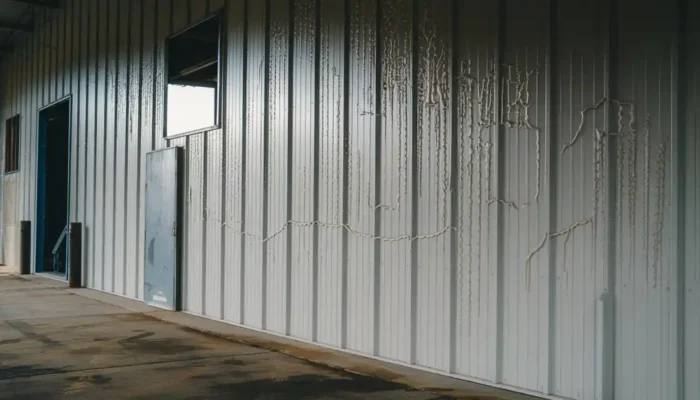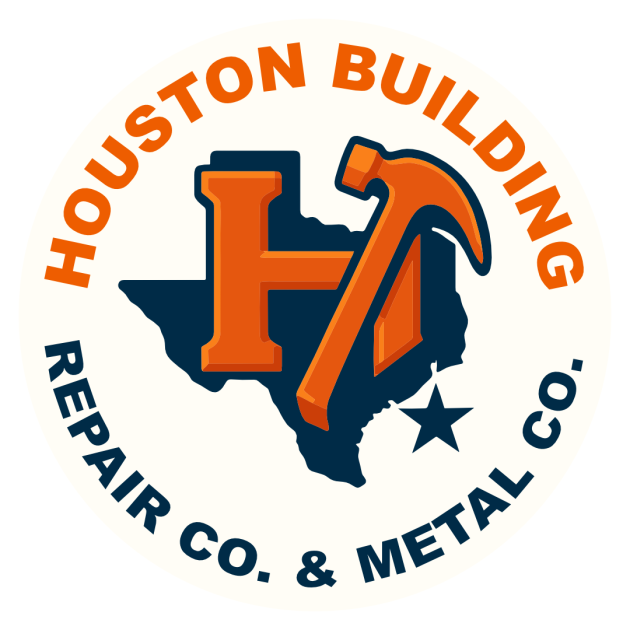How to Stop Condensation in a Metal Building
If you live in Houston, you already know what humidity feels like. From muggy summer mornings to damp winter nights, moisture is in the air year-round. That’s why if you own a metal building — whether it’s a garage, storage unit, barn, or warehouse — controlling condensation isn’t just a nice-to-have. It’s essential.
In this guide, we’ll show you how to stop condensation in a metal building, especially in a climate like Houston’s. We’ll dive into smart tips, local best practices, and proven metal building condensation control strategies to protect your property, keep your structure strong, and create a healthier environment inside your building.
What Causes Condensation in Metal Buildings?
Let’s start with the basics.
Condensation happens when warm, humid air inside your building comes into contact with cooler surfaces — typically the metal walls or roof. The moisture in the air turns into water droplets, which can then drip down or seep into insulation.
In Houston, it’s even worse
Houston’s warm climate and high humidity levels make metal buildings especially vulnerable to condensation. Fluctuating temperatures between day and night, combined with indoor activities like equipment use, vehicle storage, or heating, only increase the risk.
Common causes include:
- Poor insulation or no insulation
- Lack of vapor barriers
- Inadequate ventilation
- Gaps or leaks in doors, windows, or panels
Interior moisture sources (washing, heating, or storing damp materials)
Why Metal Building Condensation Control Matters
You might think a few droplets on the roof aren’t a big deal, but here’s the reality: Over time, condensation can lead to serious and costly problems, especially in Houston’s humid climate.
Uncontrolled condensation leads to:
- Rust and corrosion on structural steel and panels
- Mold and mildew, which pose health risks and can damage stored goods
- Warped or damaged insulation, making your building less energy-efficient
- Water stains and leaks, especially around seams and fasteners
That’s why metal building condensation control is critical — not just for comfort but for protecting your long-term investment.

How to Stop Condensation in Your Houston Metal Building
Now let’s walk through how to get rid of — and prevent — condensation in your structure.
1. Upgrade Your Insulation System
If your building is uninsulated or under-insulated, it’s an open invitation for condensation.
Best types of insulation for Houston metal buildings:
- Spray foam insulation: Seals every crack and gap, provides excellent thermal resistance, and acts as a vapor barrier.
- Fiberglass batts with a vapor barrier: Common and budget-friendly, but must be installed correctly to avoid gaps.
- Rigid foam board insulation: Ideal for walls and ceilings, especially in conditioned spaces.
For Houston’s climate, spray foam offers the best performance because it prevents both heat transfer and moisture buildup.
2. Install a Reliable Vapor Barrier
A vapor barrier prevents humid indoor air from reaching the cold metal surfaces where condensation forms. It’s usually made of polyethylene or foil-faced material and is installed on the interior side of your insulation.
If your building has already been constructed without one, retrofitting is possible — and well worth it for reducing moisture.
Local contractors in Houston often recommend vapor barriers as part of a complete moisture management system.
3. Improve Natural and Mechanical Ventilation
Ventilation is often overlooked but incredibly important.
Without proper air movement, humid air gets trapped inside, leading to higher chances of condensation — especially after Houston’s frequent rainfalls.
Tips for better ventilation:
- Add ridge and soffit vents to let warm air escape naturally
- Use exhaust fans or louvered vents on opposite ends to encourage cross-ventilation
- Keep vents clear of insulation and debris
A well-ventilated building balances indoor and outdoor air, which helps reduce moisture buildup dramatically.
4. Use Drip Stop Membranes Under Metal Roof Panels
Many Houston-area builders now use Drip Stop — a felt-like material applied to the underside of metal panels. It captures condensation as it forms, holding the moisture until it evaporates when the temperature rises.
This is especially useful in unconditioned spaces like:
- Equipment storage sheds
- Agricultural barns
- Metal garages
It’s affordable, effective, and doesn’t require electricity or fans.
5. Keep Indoor Humidity in Check
What you do inside your metal building matters too. Common Houston activities like washing vehicles, running machinery, or even just opening and closing doors frequently can increase indoor humidity.
To control this:
- Use dehumidifiers, especially in smaller enclosed spaces
- Avoid propane heaters (they create moisture)
- Don’t store wet or damp materials inside
- Monitor indoor humidity levels — aim for 50% or lower
6. Seal All Leaks, Gaps, and Cracks
Air leaks can allow warm, humid air to enter your building — especially during Houston’s wet months. Use caulk, weatherstripping, and expanding foam to seal around:
- Windows and doors
- Roof joints
- Foundation gaps
- Penetrations for plumbing or electrical
Regularly inspect for any damage or movement in the structure that could let moisture sneak in.
Long-Term Benefits of Condensation Control in Houston
Proper metal building condensation control isn’t just about comfort — it’s a smart investment for Houstonians who rely on their buildings for work, storage, or everyday use.
Here’s what you gain:
- A longer-lasting roof and frame
- Better indoor air quality
- Lower energy bills (thanks to dry, efficient insulation)
- Mold-free environment
- Protected tools, vehicles, inventory, or animals
Whether you use your building as a commercial warehouse or a backyard shop, moisture prevention helps you get the most out of your space.
Houston Homeowners’ FAQs on Metal Building Condensation
Is condensation more common in Houston than other places?
Yes. Houston’s high humidity levels make condensation a bigger challenge, especially during seasonal temperature swings.
Can I retrofit my metal building with better insulation?
Absolutely. Many Houston-area contractors specialize in upgrading existing buildings with insulation, vapor barriers, and ventilation.
How much does condensation control cost in Houston?
Costs vary by building size and the type of solution used. Basic upgrades (like vapor barriers) are affordable, while full spray foam insulation or ventilation systems may require a higher budget — but they pay off over time.
Final Thoughts: Build It Right, Keep It Dry
Condensation is a serious problem, especially in Houston’s humid climate — but it’s one you can prevent with the right approach.
From upgrading your insulation and improving ventilation, to using Drip Stop technology or vapor barriers, there’s a smart solution for every building type and budget.
Protect your Houston metal building from condensation damage and start with a moisture inspection, seal up leaks, and plan your upgrades step-by-step. The results will keep your building — and everything inside it — safe and dry for years to come.

